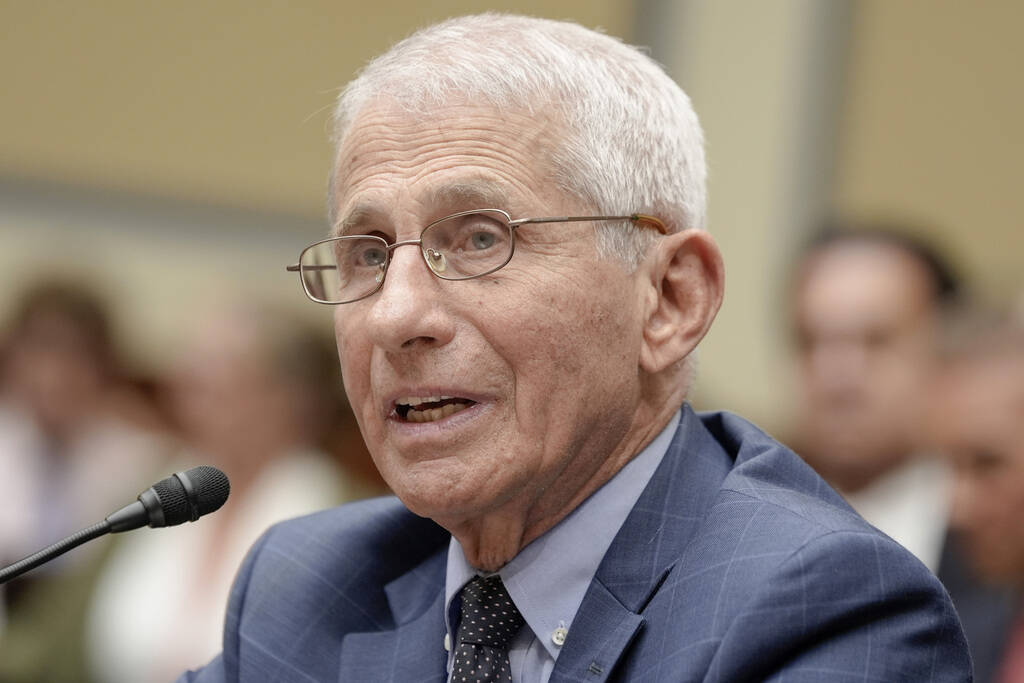SAUNDERS: A divided post-COVID America — pro-Fauci and anti-Fauci
WASHINGTON
In 2020, Dr. Anthony Fauci, then director of the National Institute of Allergy and Infectious Diseases, become the face of then President Donald Trump’s White House Coronavirus Task Force.
Four years later, it feels as if America is split into two camps — pro-Fauci and anti-Fauci.
On Monday, Fauci was called upon to testify before the House Select Subcommittee on the Coronavirus Pandemic amid accusations that he was associated in a cover-up about the virus’s origins, which Fauci denies.
Rep. Brad Wenstrup, R-Ohio, who chaired the panel, was aware of the odd tension that led to Fauci’s testimony.
“The vaccine saved millions of lives, and I want to thank you for your support and engagement in that,” Wenstrup, who also is a doctor, told Fauci.
Still, Fauci has had to address the criticism that also comes with the job.
There were lockdowns that didn’t have to be as long or severe as they were in many parts of the country. School closures left countless children behind. The 6-foot social distancing directives were not based on research. Ditto requirements that workers wear those ubiquitous paper blue masks.
I understand why these quick-draw policies were hatched.
It was a panic.
When COVID-19 first appeared on U.S. shores, the public faced an unknown threat of dubious origin — and people were dying. Americans were desperate for information from authoritative sources.
I do fault Fauci, now 83, for stifling debate. And that’s largely why he was called to testify.
As has been reported extensively, then National Institutes of Health head Francis Collins sent Fauci an email in which he suggested “a quick and devastating published takedown of” the Great Barrington Declaration. The October 2020 document written by three highly credentialed epidemiologists — Jay Bhattacharya of Stanford, Martin Kulldorff of Harvard, and Sunetra Gupta of Oxford — advocated “focused protection” for the vulnerable but normal life for others to limit the negative consequences of COVID lockdowns. Like life today.
Testifying Monday, Fauci maintained that under the Great Barrington approach, likely “another million people would have died.”
The problem with this pro-lockdown math is that it ignores the suffering and loss that followed classroom lockdowns and business closures.
As the National Institutes of Health reported last year, “Severe illness, grief, isolation, disrupted schooling, job loss, economic hardship, shortages of food and supplies, mental health problems, and limited access to health care” stressed out many Americans.
So while Fauci and company speak of the lives saved, there are also lives squandered and cut short because “the science” failed to listen to the people.
At the hearing, Fauci argued that the Great Barrington Declaration was “flawed.” But really, its authors showed a greater understanding of how lockdowns would harm families and institutions, as well as what the public would accept.
If you were inside a COVID bubble, you wouldn’t have guessed that while many in the laptop class happily were working from home, others were going to work (because they had to), but also going out to eat (because they wanted to.)
At the hearing, Rep. Jamie Raskin, D-Md., pointedly asserted that Fauci “is not a comic book supervillain.” But really, that’s how many in big media and universities saw people who assessed their own risks and lived accordingly. I flew on full planes during COVID.
So if you’re one of the thousands of workers who were fired because you refused to be vaccinated for personal or religious reasons, you might see Fauci and company as the faces of intolerance.
Contact Review-Journal Washington columnist Debra J. Saunders at dsaunders@reviewjournal.com. Follow @debrajsaunders on Twitter.























